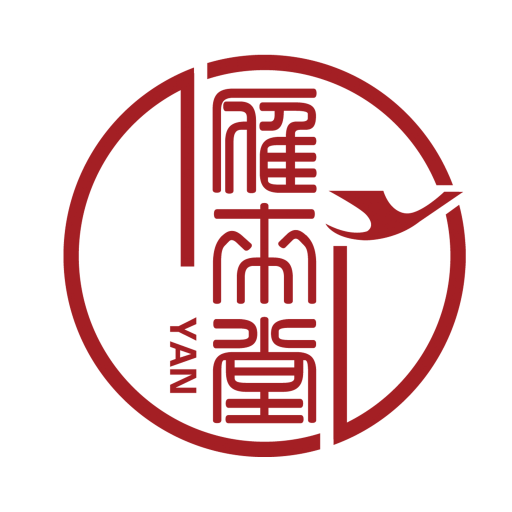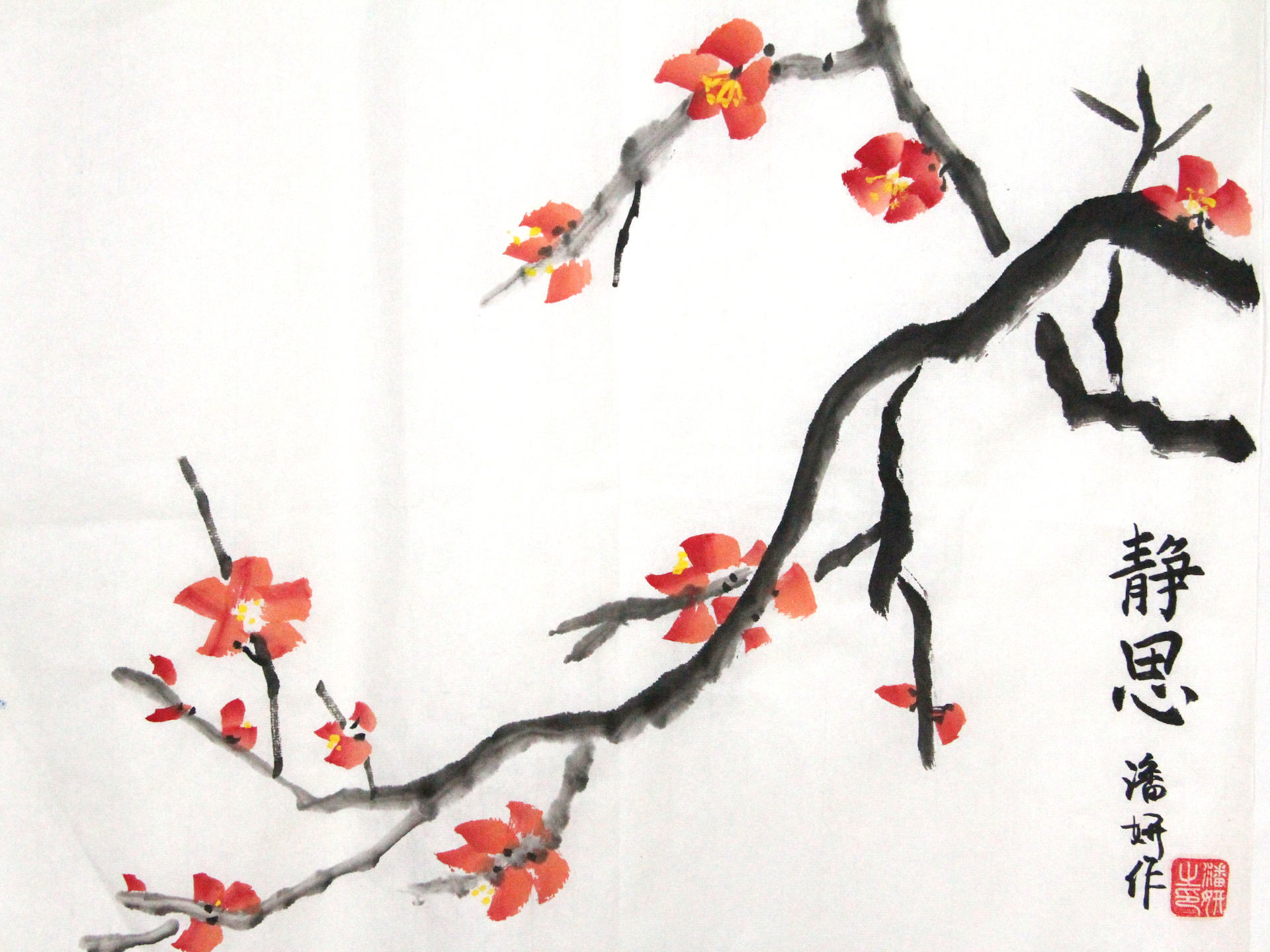
Plum Blossom
Background
“For the coming of faint perfume I long knew this was not snow” – Wang An Shi, Song dynasty.
Of western the “three friends of winter” and Eastern “four noble characters” the virtuous plum blossom has been revered by Emperors of ancient China for it’s adherence to Confucian ideals and written of in poem and drawn in art throughout recorded Eastern history.
Family Wu clean ink stones by the fount, overhead a tree petals leaving light blots
No want of pay to praise work of fine beauty, only land and sky gently washed in fragrance all.
In unceasing giving of fragrance and beauty besides the now blackened brush cleaning fount of the artists residence, great poet of the Yuan dynasty, Wang Mian, composed verse comparing the plum blossoms selfless giving to the world with the artists need for complement and praise.
Enduring through relentless struggle, the conquered peoples of the Yuan dynasty strove to survive in a difficult time, for some such as Wang Mian aspects of the plum blossom such as opening in bloom despite the relentless cold served as a symbol to endure and as unceasing spring of virtue the artist could draw from.
Known as the “winter plum” for it’s early blooming, the plum blossom was revered by ancient aristocracy and ruling classes for it’s aspired to purity of virtue, elegant blooms of flower radiating virtuous colour transposed by the cold of winter that most flowers would hide away from.
As a deciduous tree the plum blossom loses most of it’s leaves in winter, in Chinese art the dark outlines of branch and twig further reinforcing a sense of a cooler seasonal climate and stand to make beautiful blooms of flowers that much more evident.
The plum blossom tree is a part of the much larger Prunus variety of over forty varieties of fruiting tree, broadly including old world plums with stalked bunches of less than three flowers, new world plums with clumps of over three flowers, and apricots and their very short stalked groups of flowers to which the Chinese plum flower belongs to.

Plum Blossom and Traditional Chinese Painting
One of the earlier known works including plum blossom is the record “Pantheon of Plum Blossom” by SongXueYan among other contemporary authors. Painted in the Song dynasty over seven hundred years ago this was one of the earliest encyclopedic records of plants showcasing detailed illustrations of nature.
An artist of an artistic collective of plum blossom lovers, along with other artists he made records of over a hundred illustrations of plum blossom trees and other flowering plants.
Illustrating the passionate dedication to art which was pursued by the collective included building purpose built pavilions around the trees, allowing the artists to observe and directly record the nature of the plant.
Common with traditional Chinese painting the “knowing of the way” is the first commitment to study of the natural environment that through careful and repeat observation of nature imprints the form of the subject in the heart of the artist.
This is followed by the “life drawing” where the student takes the form of the subject and through direct observation takes and typically shortly thereafter records the subject, from simple outlines of form progressing to further finer details then composition of the greater image.
Though rarely used as the composition for a finished work, the collections of these works collected by the artist from nature will form their materials used in producing larger complex pieces.
In comparison to impressionism and other art forms that paint real landscapes or forms for the finished piece, the ancient Chinese artists rarely painted directly, instead observing the nature of the plant until they could internalise the form then return home to finish painting from memory.
One of the most important reasons for this is the weight and number of tools required that made painting outside unfeasible, the use of flexible paper as a medium also confers some impracticality when compared to more rigid canvas oil painting aisles though some ancient artists did build observation and painting “studios” in the outdoors to match their dedication to the subject.

Through repeat practice and observation the student progresses to “临摹” or reference from form, where the composition of an established artists work, or in the modern age from a well composed and suitable photograph, is followed and repeated.
Though the outcome of such a painting would be deemed a copy in oil painting, due to the way in which Chinese free hand is painted – with no ability to correct deviations – students will adjust the flow of their own work to form a painting that is born from their own hand, forming a picture whose composition of elements is generally similar but also different and unique to the artist.
The final path of drawing is realisation of the plum blossom tree as a composition of strokes of painting, following the image of the form that has been internalized and projected into ones imagination then painting it out through the accumulated experience of brush strokes that produce the constituent parts.

Plum blossom painting techniques
Chinese paintings will often follow a rule of balancing opposite elements when constructed – vertical with horizontal, large with small, few with many and so on.
Though paintings forms are led by a central focus piece, this is balanced by harmonious contrasting aspects that serve to break up and complement what would otherwise be a composition overpowering and unnatural in nature.
Drawing plum blossom trees a typically large element such as a vertical branch will often by followed by an accompanying smaller branch in the same vertical frame, this pair of branches would then be followed by a pair of contrasting horizontal branches smaller in size.
The addition of flowers will have a principal flower group followed by a supporting flower group, detailed flowers fewer in number and focused on a single branch will be followed by more smaller flowers distributed over many branches.
This balance of contrasting and supporting elements continues throughout the composition finally creating a naturally balanced and recognizable look to the painting.

With spacing carefully left for bright blooms of flowers the older coarser branches of plum tree are drawn in heavier black inks and multiple reinforcing brush strokes followed by newer young branches painted with lively actioned single strokes.
Larger branches are painted elegantly curved though with stiff composition like metal, contributing greatly to the final form of the painting, smaller offshoot branches curve more and yet are smaller and segment like in their nature.
Flowers are painted from two ways – one way is a circular filled outline method which is common for larger clusters of flowers while a “follow the bone” technique of painting the petal with a single stroke then filling in detail is used by our artist and talked about in our blog here.
In the “follow bone” method a single stroke forms a petal with a wetted light goat hair brush daubed with either a single or dual colour being directly pressed to form the shape.
The curve of the petal is controlled by the angle the brush is pressed with against the paper, while care is taken to ensure the petals edges are distinct and firmer in tone than the petals centre, which should tend towards a lighter more transparent effect.
In the arts literature of our artist the cherry blossom flower is comprised of five petals, through five strokes the petals are formed around a central round gap which is then filled with the flowers stamen and pistil finally painted in using a fine black ink after the flowers petals have been drawn.
The three friends in cold weather
Together with bamboo and pine in Chinese art plum blossom is recognised as virtue against the cold, the first of all flowers and standing alone to declare to winter that spring has arrived.
Finding in it’s stand against the winter a reflection of the idealism to overcome and hold steadfast against unceasing challenges, the plum blossom has through the work of countless artists evolved into an emblem of virtue and beauty in traditional arts.

